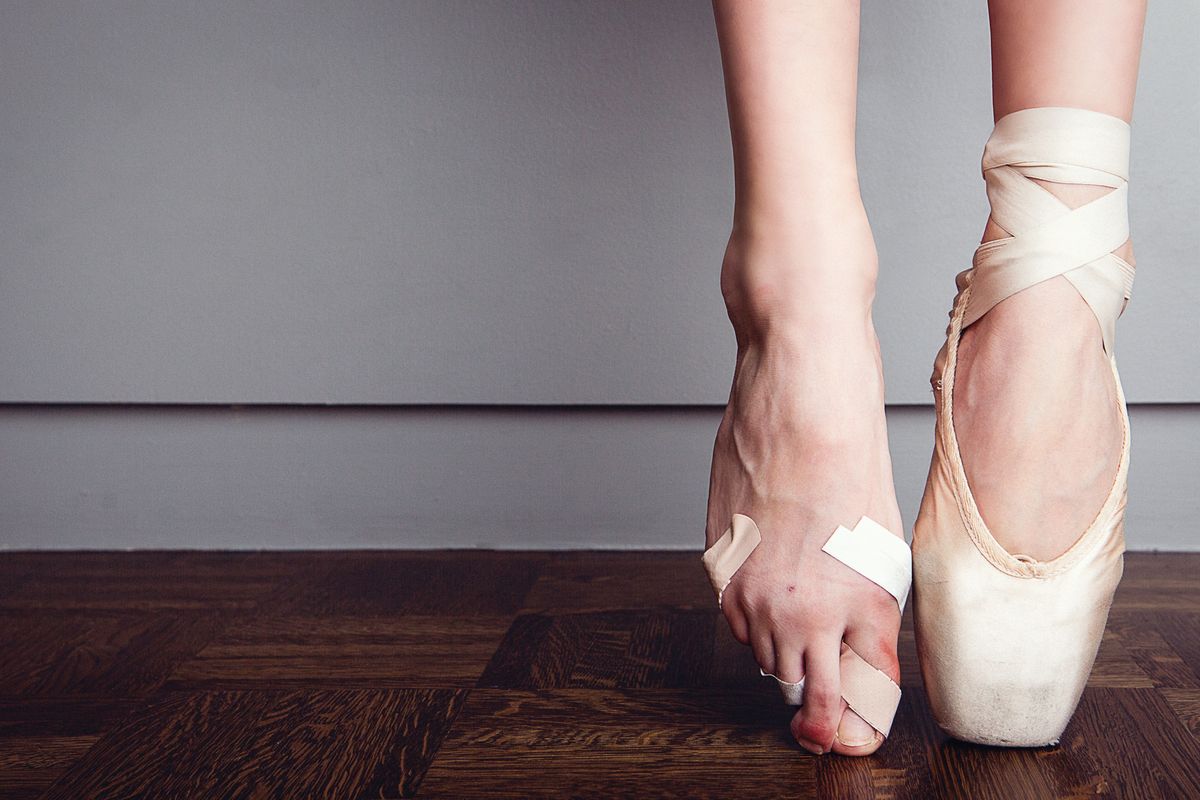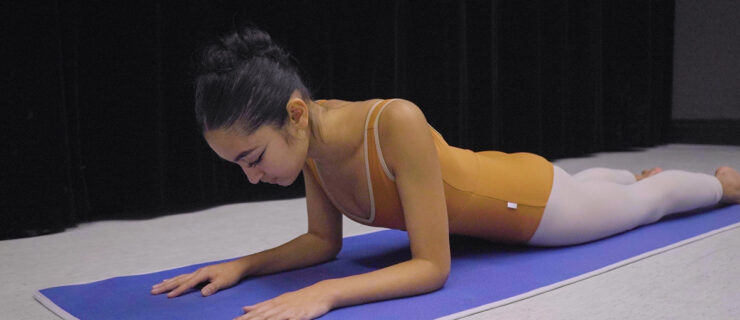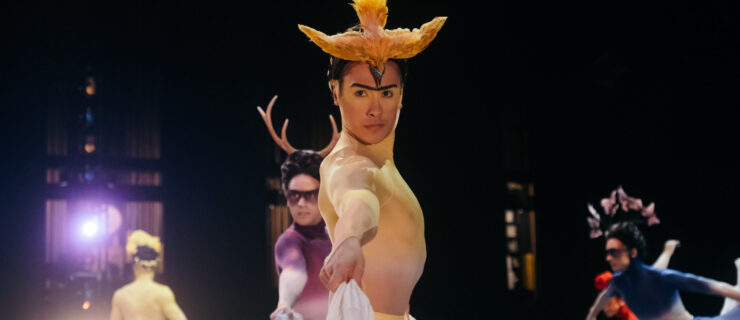Pointe Shoe 911: Six Sure Signs You're Wearing the Wrong Shoe
Despite the seemingly endless pointe shoe brands and styles to choose from, many dancers find themselves plagued by common, and often painful, problems. Stubbornly twisting shanks, baggy heels, incessant corns or a sickled look can be signs you need a different size, width or shape. Pointe spoke with pointe shoe specialists for their advice on common misfits and ways to solve them.
Twisting Shanks
Shanks that twist on pointe are a sign that you need more width, says Linnette Roe, shoe supervisor for New York City Ballet. Wearing an overly narrow size or a too-tapered box, she explains, will prevent your foot from sitting squarely in the shoe, causing the shank to twist. Try a wider size, says Roe, who uses a Brannock device (the kind used in shoe stores) to precisely fit incoming company apprentices. “I had a dancer go from 6X to 5.5 XXX, which beautifully resolved the problem,” she says.

Heels Slipping Off
If your shoe constantly slips off (or feels like it’s about to), you probably have the incorrect length—either too long or too short. Excess material at the heel prevents the shoe from staying snug on pointe. But master pointe shoe fitter Mary Carpenter, whose YouTube channel, Dancewithmary NYC, offers tutorials on a variety of pointe-shoe related topics, says she sees dancers overcorrect for baggy heels by buying shoes that are too short. A telltale sign this is the case? “The shoe hugs the foot on pointe, but when the dancer is on flat—especially in demi-plié—the heel pops off,” says Carpenter.
Sickling on Pointe
Your foot shapes beautifully in ballet slippers, but on pointe, it looks strangely sickled. Again, width is often a culprit. “Bubbling on the outside of the foot usually means the shoe is too narrow or too tapered,” says Carpenter. But width means more than side-to-side measurements. The top-to-bottom measurement (called the “crown” or “profile”) makes a big difference too. “A high crown has a lot of space from top to bottom inside the shoe and is good for wider feet, a high arch or instep, or just a foot with more volume,” Carpenter explains. “But a low crown is great for keeping narrower feet from sliding into the box on pointe. If a high-profile foot goes into a low-crown shoe, they usually sickle or their skin bubbles over the top.”
She adds that some brands have higher crowns in general. Be open to trying different brands if your foot doesn’t match a particular shoe’s profile.
 Linnette Roe in the shoe room at New York City Ballet. Erin Baiano, Courtesy New York City Ballet
Linnette Roe in the shoe room at New York City Ballet. Erin Baiano, Courtesy New York City BalletTrouble Getting Over the Platform
Rising fully onto pointe is an especially common challenge for younger students whose feet still need strengthening. Long vamps or excessively stiff shanks can make this problem worse. Charmaine Hunter, director of community enrichment at Orlando Ballet School, says adjusting the vamp based on the length of your toes can help, but she cautions against soft or three-quarter shanks for younger students. “Fighting to get on top of the box strengthens the foot, and a full shank is good for that,” she says. “When a student is older and stronger, and understands how their body works, they can start tailoring the shoe with a three-quarter or even half shank.”
If you’re really struggling, a more flexible shank combined with a supportive box will provide stability and mobility. Another area to check is the pleats on the bottom of the shoe. Short pleats (meaning the outer sole is placed very high, near the toe) make rolling from demi-pointe to full pointe more difficult. “You should really only be working against satin and burlap, not the hard leather sole,” explains Roe, adding that this issue mostly pertains to handmade shoes more than factory-made since the placement of the outer sole is decided by the individual maker.
Knuckling
Knuckling is not only unattractive, it’s dangerous and can potentially lead to stress reactions or fractures. Usually knuckling means that you need a longer vamp and/or harder wing blocks for more support. The additional resistance may make you feel like you can’t get over the tip, says Roe, so experiment to find a balance between a supportive box and softer shank. “Students especially need that to keep from sinking, pushing the knuckles out and causing injury.”
Excessive Toe Pain
Constant hard or soft corns are a sign your shoes are too narrow (and squishing your toes too tightly), or too low in the profile (causing excess friction on your knuckles). On the flip side, bruised toenails often mean the shoes are too wide, have too high a profile or are too short in length. “The shoe has to support the foot on the sides, but also top to bottom in the crown,” says Carpenter. Otherwise the foot sinks into the shoe, putting excess pressure on toenails.
While bunions are largely a hereditary problem, Roe and Carpenter stress that tapered shoes can aggravate them. Adjusting both the size and shape of the box might be necessary. “Going up a width and wearing a toe spacer gives the big toe an opportunity to straighten out,” says Roe, “but I’d recommend that someone with a wide foot who’s also developing bunions go to a wider, squarer box shape, as well.”
Finding the style and shape that’s best for you is important not only for comfort and aesthetics, but also for your technique. “If you don’t have your equipment correct, there’s no way to get to the next level,” says Carpenter. “Too tight is just as bad as too large—both will keep you from dancing correctly.”
Are Your Toe Pads Part of the Problem?
Excessively large toe pads can interfere with finding a truly accurate fit by masking a size issue—or creating one. “Dancers often wear shoes that are too big and too wide, and fill out the extra space with a bulky pad,” says Mary Carpenter, a master pointe shoe fitter. Using a thinner pad in a smaller-sized shoe often looks cleaner on pointe, she adds.
Charmaine Hunter, director of community enrichment at Orlando Ballet School, agrees. She suggests trimming down your existing pads if necessary so that they cover just the tips of your toes. “The shoe should be an extension of the foot. Buying a shoe that’s bigger just to fit your pads is doing yourself a great disservice.”








